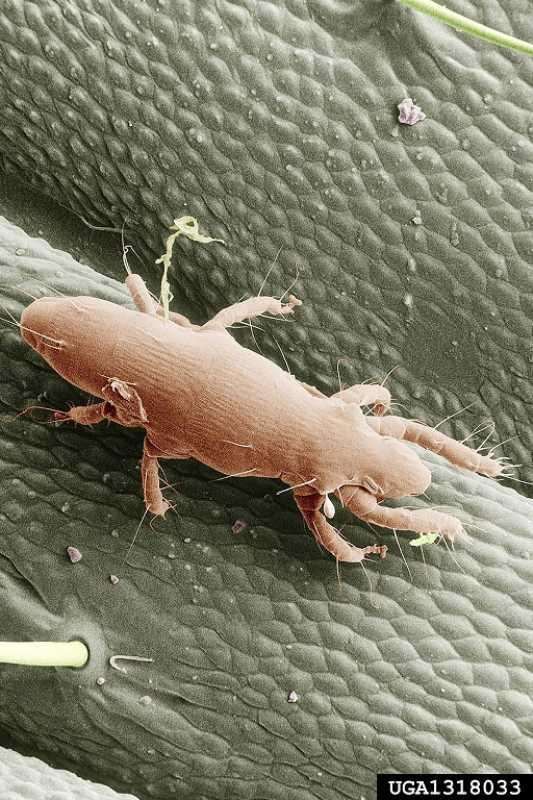 |
Straw itch mite (Acari) on the back of a caterpillar (Lepidoptera). E. Erbe, USDA - ARS, Bugwood.org |
Categorized as beneficial, straw itch mites attack insect larvae infesting grass or grain. Occasionally, mites attack humans if their normal food sources are reduced. Females before feeding are undetectable (223 microns), but after eating their size explodes to the size of a small pea. Males remain undetectable (160 microns) for their complete life cycle.
A related species, the oak leaf itch mite (Pyemotes herfsi), is also a periodic problem. It is a parasite of the oak leaf margin gall and is most associated with pin oaks but can also be found on red and black oaks as well as other species. Excellent information on this pest can be found in the Kansas State University publication Oak Leaf Itch Mite.
Life Cycle
The female, who is detectable only after she has eaten, bites a larva, person or animal and engorges herself. She lives on the food derived from the contact; therefore can produce up to 300 eggs in their abdomen, where they develop. Males are parasitic to the female and breed with the newly emerged females. The newly born and now fertilized females produce their young within seven days. This starts a process of seeking a new host by the new female crop on which they will engorge themselves.
Symptoms and Diagnosis
Determatitis, itching red welts with a small white head in the center, will develop within two to twenty-four hours. Mites do not infest beds or homes. The mite may be brought in on a person's clothing or pet, but the mites will not live more than twenty-four hours without eating. Severe itching or possible infection can occur if bites are scratched open. Itching may last up to a week or more. The welts will disappear within a few days to a few weeks.
IPM Pest Management Strategies
1. Avoid and/or wash them off. Avoid grassy areas and shower with plenty of soap after being in grass or weed area.
2. Do nothing. Chemical treatment is not recommended for most circumstances unless mites are infesting stored grains such as straw, barley, alfalfa or hay barns which would require removal of infested grain or fumigation of hay barn. Populations should decrease or completely disappear with the onset of frost.
Organic Strategies
Both of the recommended IPM strategies are strictly organic approaches.
More images:
 |
| Straw itch mite adult (Acari); note needle-like stylet used for piercing host. J. Moser, USFS, Bugwood.org |
|
|